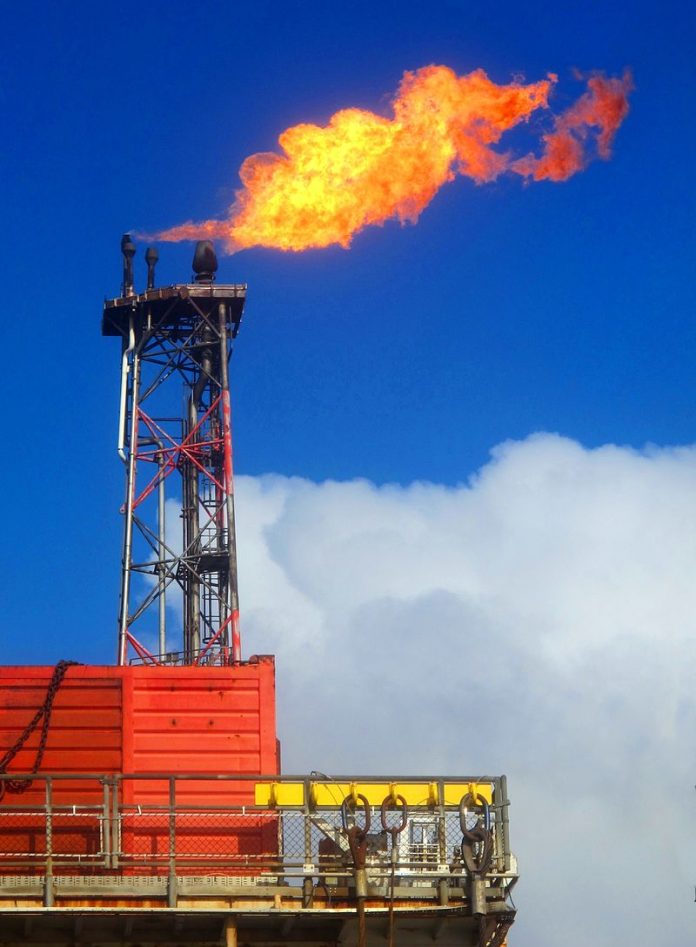The New Mexico Oil Conservation Commission has adopted new regulations requiring oil companies, natural gas processors, and pipeline operators, to reduce flaring and venting of methane gas to just 2 percent of production by 2026.
The action came in response to an executive order signed by Gov. Michelle Lujan Grisham in January 2019.
Under the rule, the 98 percent capture will based on each operator’s fourth quarter 2021 and first quarter 2022 recovery and venting data. The limits sharply restrict venting or flaring of natural gas during drilling and production operations, granting only temporary exceptions to the limits during emergencies, malfunctions, and when needed for safety.
New Mexico joins Alaska and Colorado in setting limits on flaring.
Emissions Already Declining
A new report from the World Bank says flaring in the U.S. fell 32 percent between 2019 and 2021, with only part of the decrease attributable to the global pandemic.
The report found decreased flaring in the Bakken, Eagle Ford, and Permian shale regions. The World Bank attributes more than 70 percent of the reduction in flaring to construction of new infrastructure to transport and use gas.
Flaring Costs Money
The New Mexico Oil Conservation Division of the state’s Energy Materials and Natural Resources Department estimates New Mexico operators vented or flared 36 billion cubic feet of natural gas in 2019, an amount that would generate about $10 million to the state treasury, but much more to the industry itself.
At a wholesale price of just $2 per thousand cubic feet, producers would have earned more than $72 million in revenues from that amount of natural gas, had they been able to get it to market rather than flaring it.
Oil and gas revenues are critical to the New Mexico economy. Nearly 40 percent of the state budget, and sizable percentages of local and county budgets, are funded by oil and gas production.
Regulation Not Needed, Pipelines Are
Industry professionals are eager to minimize venting and flaring of valuable natural gas, but the proposed rules are only reasonable if they allow and expansion of pipelines, says Paul Gessing, president of the Rio Grande Foundation.
“Nobody wants unnecessary venting and flaring, nor is flaring done indiscriminately,” said Gessing. “If the state’s primary emphasis is using enforcement to penalize flaring and venting, the rules will have negative impacts.
“The real problem is a lack of pipeline infrastructure, in large part due to regulations,” said Gessing. “If infrastructure is improved, excess venting and flaring will take care of itself, if not, then the new rules or President Biden’s moratorium on oil and gas leasing on federal lands, will force curtailment of production at great cost to operators and the state.”
Forced Production Reductions Cost Money
Some of the recent venting and flaring is associated with the significant increase in crude oil production in the bi-state Permian Basin combined with limited pipeline access, says petroleum geologist Karr Ingham, executive vice president of the Texas Alliance of Energy Producers (TAEP).
“Had New Mexico’s policy been in place for the past few years, operators in the state would have had to significantly restrict production due to a lack of pipeline infrastructure,” Ingham said. “Federal policy to shutter existing pipelines and ban new ones only exacerbates the problem.
“A flaring cap would have created a significant tradeoff resulting in much lower crude oil production, and the revenue from lower production would obviously have been lost to the industry and to the state,” said Ingham. “Moreover, any flaring increases were a temporary phenomenon brought about by the rapid increase in crude oil production, with associated gas production as the byproduct; historically that problem has always been solved by investment in increased pipeline capacity.”
The oil and gas industry shares New Mexico’s goal of reducing flaring, says Jason Modglin, president of TAEP. Modglin added, absent any regulation, when governments have not hampered pipeline expansion, the industry has taken steps reduce flaring and venting.
“Fracking is increasing because of the recovery of price and demand for oil and gas,” said Modglin. “This is a good thing for the United States to see domestic production rebound. “Securing takeaway capacity for waste gas, which requires market investment and innovation, not top-down control, is the best way to conserve that gas for a beneficial use,” Modglin said.
Duggan Flanakin (dflanakin@gmail.com) writes from Austin, Texas.


























